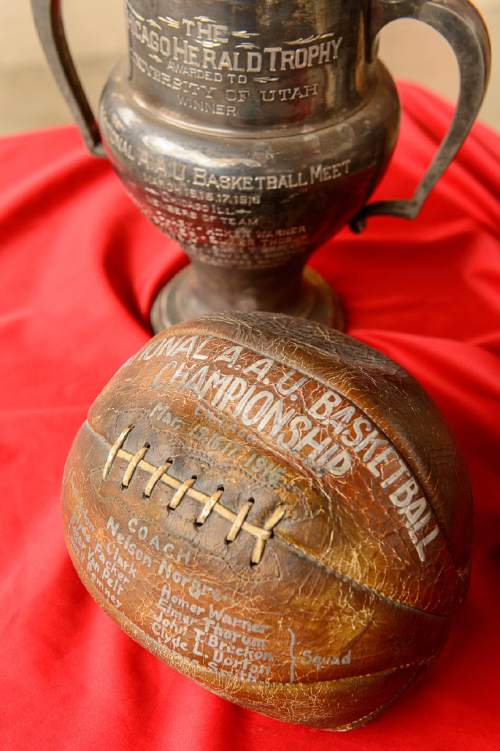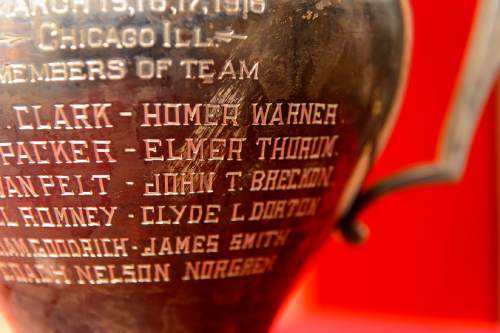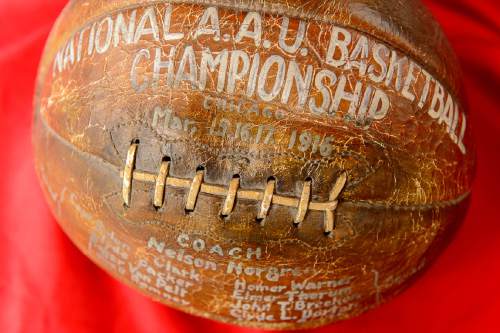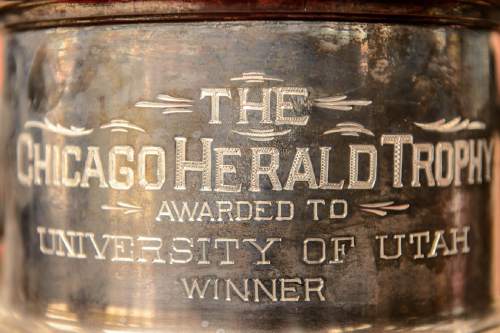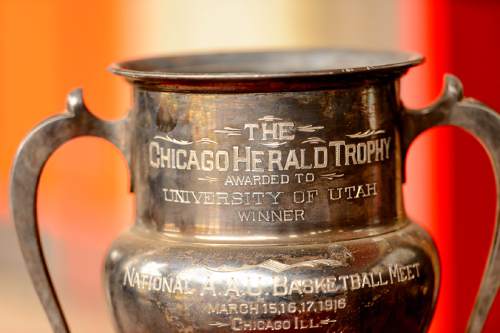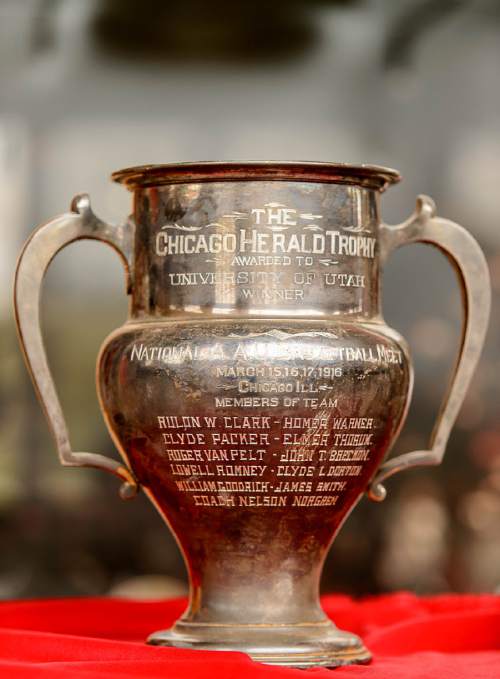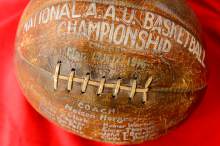This is an archived article that was published on sltrib.com in 2016, and information in the article may be outdated. It is provided only for personal research purposes and may not be reprinted.
The next day's reports indicate that University of Utah forward Clyde Packer hit the game-winning shot — described by the Salt Lake Telegram as "a pretty goal toss" — with 15 seconds left.
U. guard Ernest Lowell "Dick" Romney would later recall to the Ogden Standard-Examiner that Packer's shot came "as the gun went off," and that an Illinois Athletic Club supporter who had celebrated prematurely then fainted when she heard about Packer's bucket.
Whenever it happened, it's known that Packer's shot passed through a net — which replaced James Naismith's peach baskets about 10 years earlier — and that it made Utah the first college to win a regularly occurring national men's basketball tournament.
One hundred years to the day, Utah stands as the lone school to have won Amateur Athletic Union (1916), National Collegiate Athletic Association (1944) and National Invitational Tournament (1947) championships as it meets No. 14 seed Fresno State in Denver.
The university's physical valuation in 1916 was less than $1 million — roughly $22 million in today's dollars, or $14 million less than the cost to build the U.'s current basketball facility.
But it had an equalizer in Nelson H. Norgren, who'd starred in football, basketball, track and baseball at the University of Chicago and served as the U.'s athletic director and coach of its football and basketball teams.
Of Norgren, students wrote in the school's 1917 Utonian yearbook: "There is no occasion for a résumé of his achievements. All that need be written is, that he has made good. How long his resolute influence will be felt upon the campus is uncertain, but it is the sincere hope of every loyal supporter of clean, vigorous athletics that he will see fit to remain."
The U.'s student newspaper, The Daily Utah Chronicle, wrote that Utah's players were "primed to fight every minute" because of Norgren's policy that "the man who loafs an instant goes out of the game."
His team, led by lithe center Roger "Happy" Van Pelt, captain Rulon "Bunny" Clark, Bill Goodrich, Romney and Packer, was tested once in the regular season — narrowly beating Utah State in what may have prompted the school's yearbook staff to write that it had "failed to elicit the confidence of its own supporters."
But Utah twice beat BYU — the 1915 state champion and 1904 Olympic demonstration runner-up — and throttled the reigning national champion Olympic Athletic Club, of San Francisco, before a crowd of 1,500 at the Deseret Gym.
If confidence in Utah ever had waned, it was restored enough that student leaders campaigned for four days to send the team to the AAU tournament in Chicago. Of the $1,300 raised, students pitched in $250.
The Utes — often referred to in reports then as huskies — routed Columbia Athletic Club in the AAU semifinals to earn a semifinal rematch with Olympic AC in which many of the 3,000 supporters at the Chicago Armory apparently backed Norgren's team on account of his exploits at the University of Chicago.
Olympic squandered a 13-5 lead in that contest — "one of the roughest seen in the Windy City in many a moon," according to The Chronicle — and finished with four men because of foul trouble.
Olympic star Red Kemp missed a late free throw that The Chronicle credited to "such a shout that the finest basket shooter in the world would have been unable to drop the ball in Lake Michigan," and Utah prevailed by a single point, 36-35.
The 3,500 "screeching rooters" who attended the finale against Illinois AC constituted the largest crowd ever to attend a basketball game, according to The Telegram, and were treated to another thriller.
The yearbook would quote an unnamed Chicago daily as saying Utah's success was due to the "Superior Condition of the Mormons, a better systematic attack, a more thorough working knowledge of the finer points of the pastime; a coach, Nelson H. Norgren, who just oozes with that something which makes the pupil go the limit for the master, and last but not least, that combination, relay method of working the large round leather under the hoop."
The Utonian called it "undoubtedly the greatest athletic victory ever achieved by a western college" — those Utes sure, it theorized, to never be forgotten.
Romney — who hit a midcourt shot in the finale that The Chronicle reported was "the most spectacular play of the tourney" — went on to become head football coach and athletic director at Utah State, where the school's football stadium was named after him until Maverik bought the naming rights in 2015.
Clark became a longtime juvenile court judge; Van Pelt, a high school principal; Goodrich, a mining engineer; and Packer, an Idaho farmer.
Given that only Packer was lost to graduation, The Chronicle wrote that in 1917, "the chances of retaining the national championship look pretty certain."
Utah went 3-3 and placed third in state, while BYU finished AAU runners-up.
Twitter: @matthew_piper



